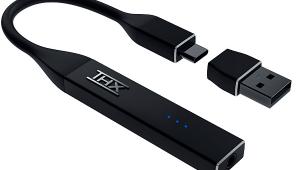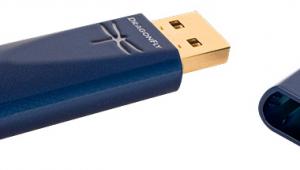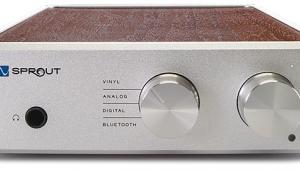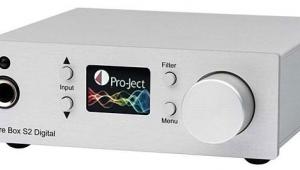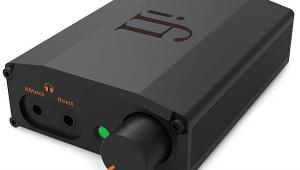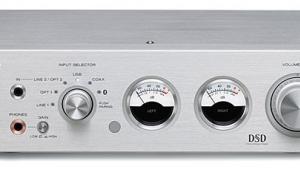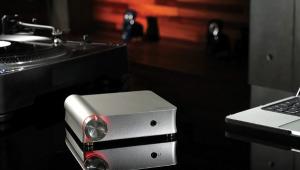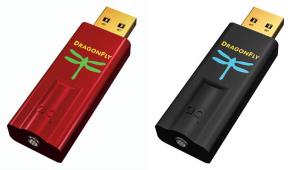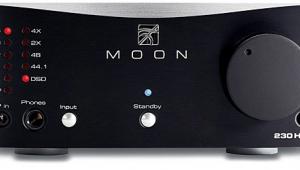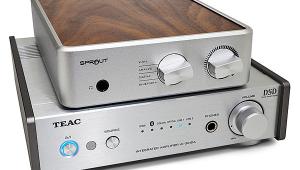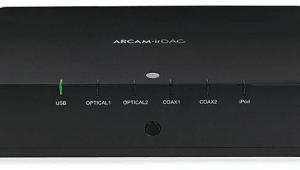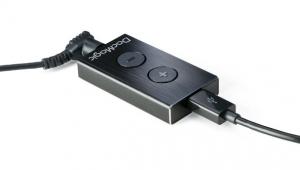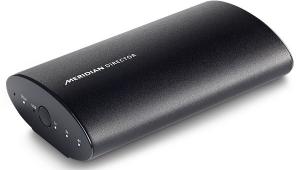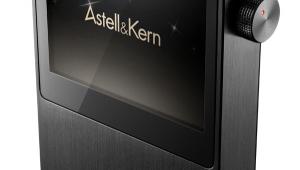Wadia 121 Decoding Computer

The Wadia 121 calls itself a decoding computer. While the term DAC (digital-to-analog converter) also fits, Wadia understands that nomenclature is destiny. This product just may be destined to change forever the way you hear high-resolution music files, signaling a new chapter in audio history that no audiophile can afford to ignore.
If you love music, what’s been happening to it lately must disturb you. Our beloved bits are being shoehorned into tiny, easily transported files using lossy audio codecs that give up most of the data and much of the resolution—much of the soul, really, as Neil Young points out. Up to now, that’s been the price we pay for getting to carry large music libraries in phones and devices almost as small as a postage stamp, such as my sixth-generation iPod nano.
But the counterrevolution has begun, and the soldiers on the front lines are high-resolution audio files, either uncompressed or lossless. Depending on how they’re encoded, they can not only achieve true CD quality—which is to say, 16 bits and a 44.1-kilohertz sampling rate—they can actually exceed it. High-resolution files are manna from heaven both for the contemporary listener who’s tired of hearing music being mangled by MP3s and for the analog diehard who feels even the shiny CD never had the same relaxed, innately musical feel as a diamond stylus wiggling through a paradise of analog grooves.
How does this fit into a home theater system? It doesn’t—or at least, not routinely. True, today’s audio/video receivers are loaded with silicon, but that doesn’t usually include a high-res DAC for computer-fed high-res audio files arriving at the USB input. At this writing, I know of only two receivers that can do justice to USB-fed high-res files: the Pioneer Elite SC-68 and the Cambridge Audio Azur 751R (under review).
While we expect to see this feature spread to other models and manufacturers, right now there’s a pressing need for standalone DACs that can accept a high-res input via USB and convert it to a true high-res analog signal. The Wadia 121 may be the perfect upgrade for a high-end home theater system, two-channel system, desktop system, or headphones. It is a triple threat: high-end DAC, digital stereo preamp, and headphone amp. As I later discovered, the headphone section alone would be worth the price of admission.
March of the DACs
DACs as a standalone product are nothing new. As soon as audiophiles became determined to make the best of the innately compromised CD format, they began embracing standalone DACs as a way to improve digital output from a CD player. Wadia was a pioneer in this movement, as were such companies as Theta and Meridian. So the 121 decoding computer is the caboose on a long train of thought.
Like most newer DACs, it uses asynchronous technology, substituting its own clock for that of the digital source component. This reduces jitter in the digital domain in an attempt to reduce audible distortion that results when a transport or multitasking PC spits out a stream of chaotically mistimed zeroes and ones. The 121 also substitutes its volume control for that of the computer and does all volume computations in a 32-bit digital domain before feeding the signal to the DAC chips, so you can reduce volume without giving up resolution.

Standing alert on its rubber cones, it is pleasingly compact, about half the width and depth of a standard rack-mount component, thanks to an external power brick. That should enable it to fit onto your busy desktop or equipment rack. The front panel has three columns of blue LEDs. At far right are source indicators. USB is the most critical input for the purpose of this review, but you’ll also recognize the one digital optical input and two digital coaxial inputs for use with disc players and other sources. The AES/EBU input is the electrically balanced alternative to those and is often used in professional applications. A phase (absolute polarity) indicator sneaks in at bottom (the 121 can invert phase via remote).
Another row of LEDs indicates the sampling rate of the incoming signal, from 44.1 (the CD standard) to 48, 88.2, 96, 176.4, and 192 kHz. The latter requires a software driver that is included with Mac OS X but requires installation on a Windows PC from a supplied thumb drive. I was especially interested in the 96- and 192-kHz options because I’m starting to amass a download library in those formats. Closer to the center are the LEDs indicating volume. The front panel also includes a quarter-inch headphone jack.
The back panel includes the connectors for all the inputs mentioned earlier along with a choice of analog outputs: balanced XLR or unbalanced RCA. You can use the DAC as a source component, as it would be in a home theater system; or as a stereo preamp, in which case the XLR outputs might come in handy; or as a headphone amp, using discrete internal circuitry. If you plan to use it as a stereo preamp, note that the 121 does not have either a phono stage or analog inputs for connection of a phono preamp or other line-level analog devices. The level of the analog outputs can be adjusted to suit your system. The small but not unsubstantial remote control offers the volume, mute, and input buttons you’d expect along with balance, phase, display, and other controls.
The 121 can accept content with a depth of up to 24 bits and a sampling rate up to 192 kHz. However, its processor is actually more powerful, resampling to 32 bits and 1.4 megahertz using proprietary filtering and other algorithms. When used as a headphone amp, the Wadia’s trademarked SwiftCurrent topology kicks in, performing current-to-voltage conversion as a pure Class A device, with no global feedback, and with claims of time and phase coherence being maintained throughout the signal chain.
In the Main System
This is the part of the review where I mention ancillary equipment used to review product. The Wadia spent time in my main reference system with Paradigm Reference Studio 20 v.4 speakers, a Paradigm Seismic 110 subwoofer, Pioneer Elite VSX-53 A/V receiver, and Lenovo Win 7 laptop to feed the USB DAC. As the best DAC in my possession at the time, it had other playmates, including Cambridge Audio Minx Min21, Gallo Classico, GoldenEar Aon 2, Phase Technology V52, and Pioneer SP-BS22-LR speakers (the last designed by Andrew Jones); and Onkyo TX-NR3010 and Pioneer Elite SC-61 A/V receivers. That little box sure did get around.
- Log in or register to post comments



